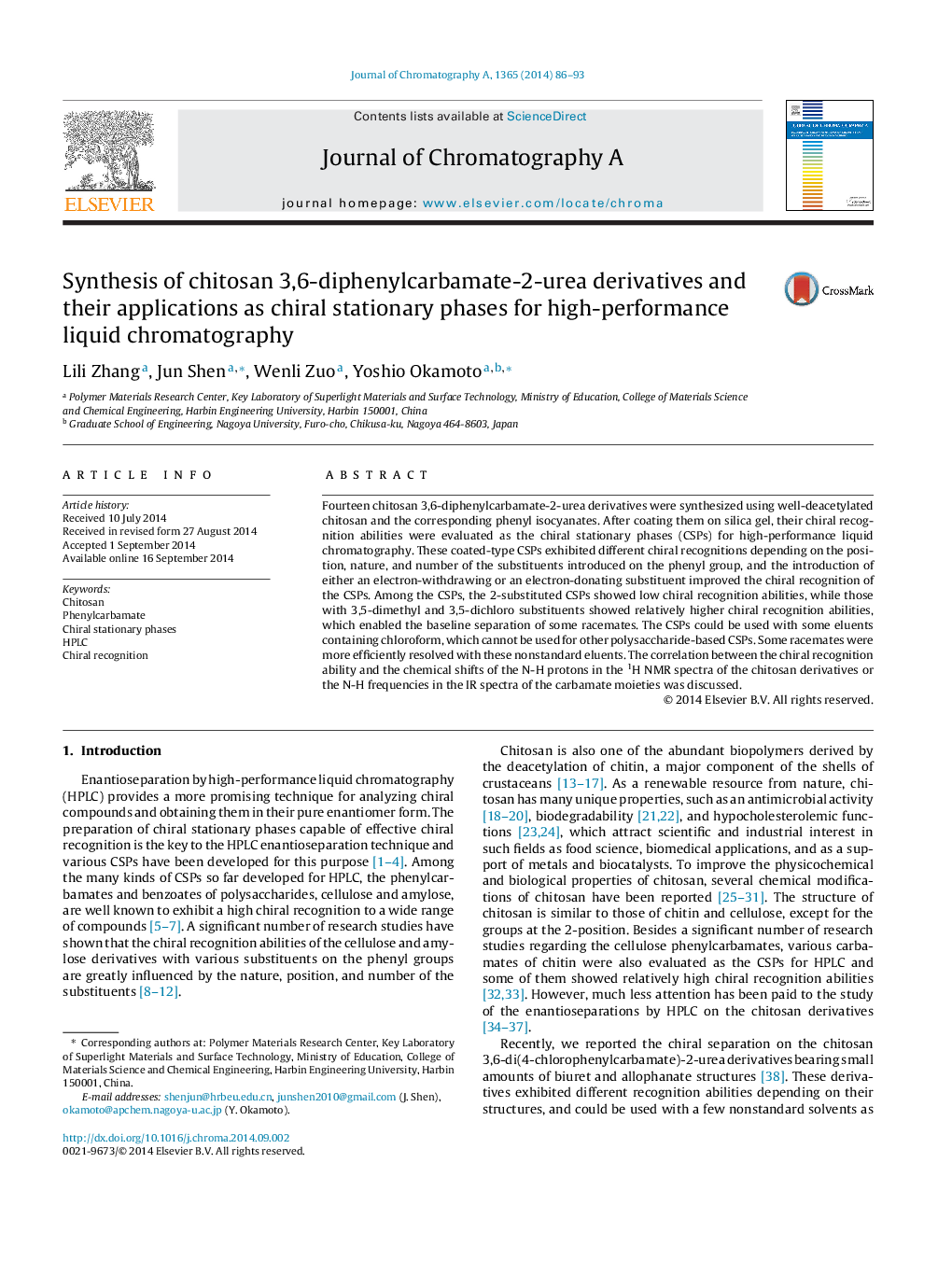| Article ID | Journal | Published Year | Pages | File Type |
|---|---|---|---|---|
| 1199755 | Journal of Chromatography A | 2014 | 8 Pages |
•Fourteen chitosan 3,6-diphenylcarbamate-2-urea derivatives were synthesized.•Electron-withdrawing or -donating groups can obtain high chiral recognition ability.•Chiral recognition ability depends on position, nature and number of substituents.•Coated CSPs based on the chitosan derivatives could be used with nonstandard eluents.•Correlations between chiral recognition and N-H chemical shifts and IR frequencies.
Fourteen chitosan 3,6-diphenylcarbamate-2-urea derivatives were synthesized using well-deacetylated chitosan and the corresponding phenyl isocyanates. After coating them on silica gel, their chiral recognition abilities were evaluated as the chiral stationary phases (CSPs) for high-performance liquid chromatography. These coated-type CSPs exhibited different chiral recognitions depending on the position, nature, and number of the substituents introduced on the phenyl group, and the introduction of either an electron-withdrawing or an electron-donating substituent improved the chiral recognition of the CSPs. Among the CSPs, the 2-substituted CSPs showed low chiral recognition abilities, while those with 3,5-dimethyl and 3,5-dichloro substituents showed relatively higher chiral recognition abilities, which enabled the baseline separation of some racemates. The CSPs could be used with some eluents containing chloroform, which cannot be used for other polysaccharide-based CSPs. Some racemates were more efficiently resolved with these nonstandard eluents. The correlation between the chiral recognition ability and the chemical shifts of the N-H protons in the 1H NMR spectra of the chitosan derivatives or the N-H frequencies in the IR spectra of the carbamate moieties was discussed.
